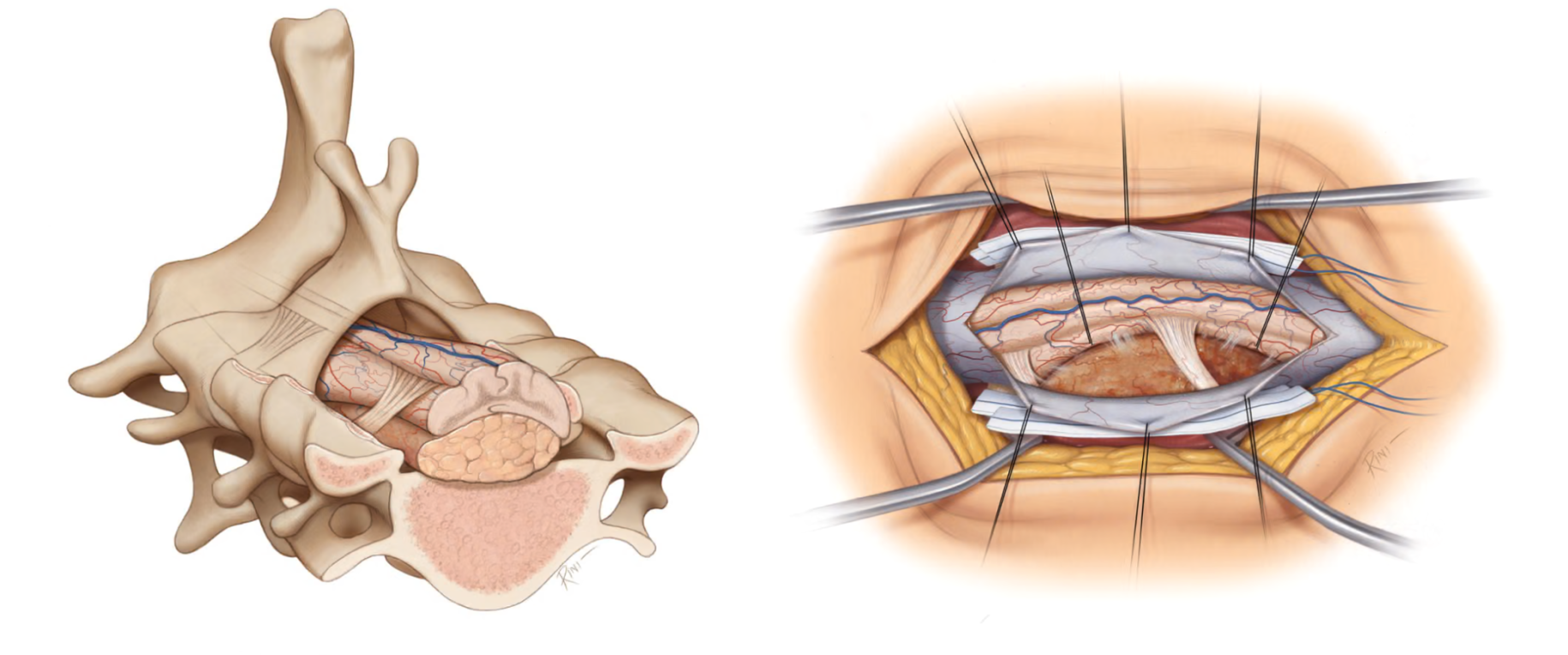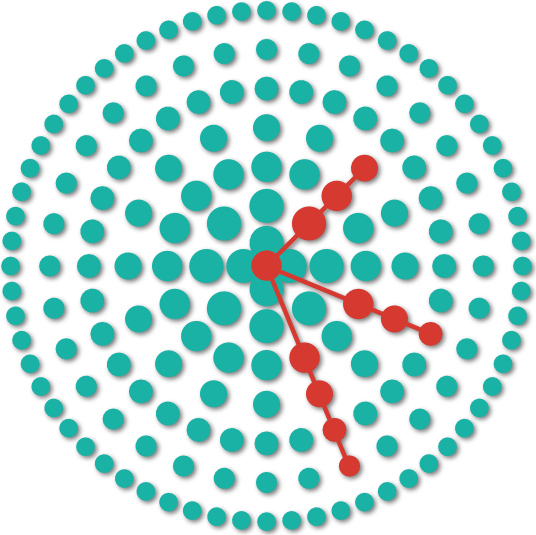Spinal Meningioma: Symptoms and Treatment in Los Angeles, CA


An illustration of a spinal cord meningioma in cross section and operative views, compressing the spinal cord.
A meningioma on spine is a type of tumor that arises from the meninges, the protective layers covering the brain and spinal cord. Although these tumors are typically benign (not cancerous), their growth within the spinal canal can compress the spinal cord or nerves, leading to pain, weakness, sensory changes, or even paralysis if left untreated.
Early detection and timely treatment are essential for preventing permanent neurological damage. For patients in Los Angeles, access to expert neurosurgeons and advanced facilities ensures that diagnosis and treatment options are among the most advanced available.
Spinal Meningioma Tumor
A spinal meningioma tumor is a growth located within the spinal canal but outside the spinal cord itself. Most of these tumors are slow-growing and noncancerous, but their location means that even small growths can have significant clinical consequences. Compression of the spinal cord or surrounding nerves often leads to symptoms such as
- Back pain or localized spinal discomfort.
- Weakness in the arms or legs.
- Numbness or tingling sensations.
- Difficulty walking or balancing.
- Bladder or bowel dysfunction (in severe cases).
Because these symptoms can mimic other spinal conditions, early accurate diagnosis is critical.
What Is a Spinal Meningioma Tumor?
A spinal meningioma is derived from the meninges (the membranes that encase the spinal cord and brain). Within the spine, these tumors typically occur in the thoracic (midback) region, but they also can be found in the cervical (neck) or lumbar (lower-back) regions.
Key features of a spinal meningioma include
- Benign nature: Most are World Health Organization grade I, meaning that they are noncancerous and slow-growing.
- Female predominance: Women are more likely than men to develop spinal meningiomas.
- Slow progression: Symptoms often develop gradually, but the longer they remain untreated, the greater the risk of irreversible neurological injury.
Recognizing the presence of a meningioma in the spine early can mean the difference between a full recovery and lasting impairment.
Why should you have your surgery with Dr. Cohen?
Dr. Cohen
- 7,500+ specialized surgeries performed by your chosen surgeon
- More personalized care
- Extensive experience = higher success rate and quicker recovery times
Major Health Centers
- No control over choosing the surgeon caring for you
- One-size-fits-all care
- Less specialization
For more reasons, please click here.
What are the Types of Meningioma on Spine?
Meningioma in spine is categorized according to their growth pattern, grade, and biological behavior.
- Benign meningiomas (grade I)
- Represent the majority of cases of meningioma in spine.
- Slow-growing and often treatable with complete surgical removal.
- Atypical meningiomas (grade II)
- Less common and exhibit a higher risk of recurrence.
- Require careful follow-up even after surgery.
- Malignant meningiomas (grade III)
- Rare and aggressive and often require additional treatment such as radiation therapy.
Types of meningiomas can also be described based on their location within the spinal canal.
- Intradural-extramedullary: Most common type; the tumor is inside the dura (the outermost layer of the meninges) but outside the spinal cord.
- Extradural: Rare; occurs outside the dura, sometimes mimicking other spinal tumors.
- Intradural-intramedullary: Extremely rare; grows within the spinal cord itself.
Understanding the type of tumor is key to determining the right surgical or nonsurgical treatment plan.
Diagnosis of Meningioma on Spine
Accurately diagnosing meningioma involves reviewing the patient’s history and performing a neurological examination and advanced imaging studies.
- MRI (magnetic resonance imaging) scan: The gold standard; provides visualization of the tumor’s location and size and its effect on the spinal cord.
- CT (computed tomography) scan: Sometimes used to assess bone involvement or calcification within the tumor.
- Neurological examination: Identifies sensory or motor deficits caused by spinal cord compression.
Differential diagnosis is also important, because meningioma in spine symptoms can be similar to those caused by herniated discs, multiple sclerosis, or metastatic cancer. A precise diagnosis ensures creation of the most effective treatment strategy.
Treatment of Spinal Meningioma
The cornerstone of treatment for spinal meningiomas is surgical intervention. Because these tumors often compress the spinal cord, the goal is to relieve pressure while removing as much of the tumor as possible.
Surgical Meningioma Removal
- Complete removal: In most cases of benign meningioma, surgery can successfully remove the tumor, leading to an excellent long-term outcome.
- Partial removal: For cases in which the tumor is attached close to critical structures, the surgeon might remove most of the tumor while preserving spinal cord safety by leaving a small amount of adherent tumor behind; additional treatments, such as radiation, may follow.
- Minimally invasive techniques: Modern approaches often use smaller incisions and advanced surgical tools, reducing recovery time and minimizing disruption to surrounding tissues.
Radiation Therapy
If the tumor cannot be removed completely or if it shows aggressive characteristics, radiation therapy might be used. Stereotactic radiosurgery or fractionated radiation can target residual tumor cells while sparing healthy tissue.
Recovery After Surgery
Recovery times vary on the basis of tumor size, location, and surgical complexity. Many patients experience significant improvement in symptoms shortly after surgery. Rehabilitation, including physical therapy, can help restore strength, balance, and mobility.
Multiple studies have shown that patients who undergo complete meningioma removal enjoy low risk of the tumor reappearing and excellent long-term function.
Access World-Class Meningioma on Spine Treatment in Los Angeles
Los Angeles is home to some of the most advanced neurosurgical centers and highly experienced specialists in the United States. Patients benefit from
- Expert spinal tumor surgeons with high case volumes.
- State-of-the-art surgical techniques, including minimally invasive and endoscopic approaches.
- Multidisciplinary care teams combining neurosurgeons, neurologists, oncologists, and rehabilitation specialists.
- Comprehensive follow-up care to monitor for recurrence and support long-term recovery.
If you are diagnosed with a meningioma on spine or meningioma in spine, timely treatment is critical for preventing permanent neurological damage. Surgical expertise and advanced care options available in Los Angeles provide patients with the best chance for recovery, mobility, and improved quality of life.
Conclusion
A meningioma on spine is a serious but often treatable condition when it’s detected early and managed by experienced specialists. Diagnosis with advanced imaging, careful surgical planning, and complete or near-complete meningioma removal are the keys to restoring function and preventing long-term complications.
For patients in Los Angeles, access to world-class expertise ensures that even the most complex spinal meningiomas can be treated with precision and care. Whether the tumor is benign or more aggressive, expert neurosurgical teams offer the best chance for excellent outcomes and a return to normal life.
Getting There
The clinic is located at Cedars Towers East which is at 8631 W 3rd Street, Suite 815E, Los Angeles, CA 90048, near Beverly Grove. It’s easily accessible from San Vicente Boulevard or La Cienega Boulevard. Paid parking is available in the adjacent structure and limited street parking can be found nearby. For navigation, entering “8631 W 3rd St” into GPS will direct you to the main entrance.
The entrance to the Cedars Towers East parking garage is on Sherbourne Drive, located just north of 3rd Street. It is a self-parking garage with the address 217 S Sherbourne Dr, Los Angeles, CA. The entrance is on the right if you are traveling south on Sherbourne, or on the left if you are traveling north on Sherbourne. You then need to take the parking elevators to the plaza level and then cross the short bridge to use the East elevators to reach the 8th floor (suite 815.) Allow extra time for traffic and parking, especially during weekday mornings.











